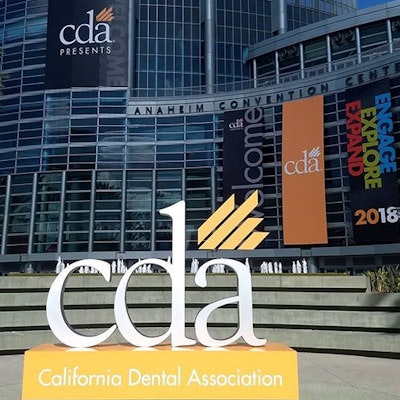
You tell your patients to brush and floss and also praise the merits of fluoride, so why are they still coming back with cavitated lesions? Brian Novy, DDS, discussed three ways to restore balance to the mouth when traditional methods don't cut it at the recent California Dental Association's CDA Presents 2018 meeting in Anaheim, CA.
"Give me something to treat this disease that's better than something my patients can buy at a drugstore," Dr. Novy told the crowd at his well-attended lecture.
Dr. Novy practices family dentistry in Westborough, MA. He is also the executive director of the DentaQuest Oral Health Center and the director of practice improvement at the DentaQuest Institute.
3 strategies
In addition to dentistry, Dr. Novy's passion has been in cariology and finding new methods to treat the most common disease on earth. Therefore, he's constantly on the lookout for new products and tools that remineralize teeth and nurture a healthy microbiome, and he discussed three of those substances during his lecture.
1. Arginine
Dr. Novy isn't the first lecturer, nor will he be the last, to praise the merits of arginine. When the amino acid breaks down, it releases ammonia, increasing the pH level of the oral cavity so cariogenic microorganisms cannot thrive.
Arginine cannot be labeled as an anticaries product in the U.S., so arginine toothpastes and chews are often marketed as "desensitizing." For his patients, Dr. Novy recommends BasicBites by Ortek Therapeutics. These candy-like chews contain arginine bicarbonate and calcium carbonate, and he's noticed positive results.
He also mentioned that Tom's of Maine makes Rapid Relief Sensitive toothpaste, which contains arginine. However, some of the best toothpastes are actually reserved for our pets.
"You want the best toothpaste, go to Petco," he said. "The animals of this country have better toothpaste than we do."
2. Chitosan
Dr. Novy described chitosan as Teflon for bacteria. It's a substance found on lobsters and other shellfish that prevents bacteria from sticking to their skin, and the U.S. military used chitosan to make a mouthwash, according to Dr. Novy.
However, because the U.S. Food and Drug Administration (FDA) is notably slow at approving products, chitosan has only been approved for use in elephants and rhinoceroses. Nevertheless, the U.S. Department of Defense sold the rights to its mouthwash, and a private company created Synedent.
"I don't get any money from Synedent.com, but it's replaced chlorhexidine in our practice," Dr. Novy said. "It tastes great, and it doesn't burn because it has no alcohol."
Dr. Novy did caution that he wouldn't use the rinse on a person who had a fish or shellfish allergy.
3. Silver diamine fluoride
Silver diamine fluoride (SDF) is technically not new. Studies were done using SDF in the 1930s, but the FDA did not approve its use until 2015. Since then, Dr. Novy has readily adopted it in his practice.
"One application will slow down the caries process," he said. "Two applications will arrest it."
Dr. Novy uses SDF to arrest carious lesions and before placing restorations. Yes, the product does cause staining, but he has yet to have an upset patient, he noted. Instead, he introduces the concept of staining by telling kids they will get a "freckle" on their tooth.
"I have never, ever had one parent or patient come back upset," Dr. Novy said.
He also cautioned that SDF does not work for every patient, and it works for some carious lesions better than others. However, he noted that it works best when it is applied to a bone-dry tooth.
"It's an amazing product," Dr. Novy said. "It's got a very unique method that we've never had before."



















